#Common Blue Mud-dauber Wasp
Explore tagged Tumblr posts
Text

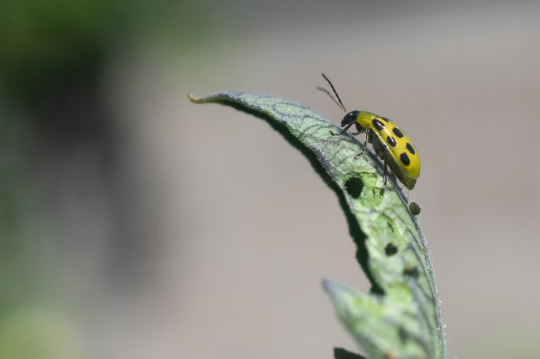

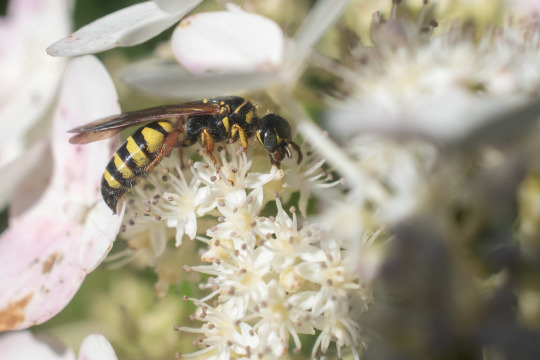
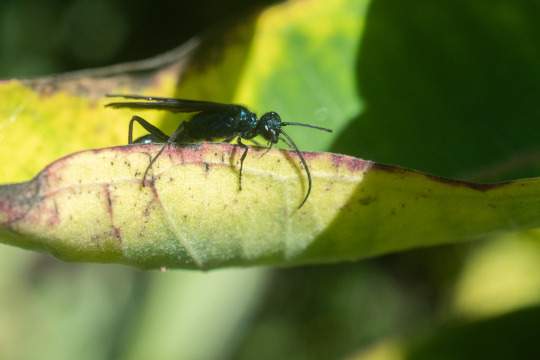
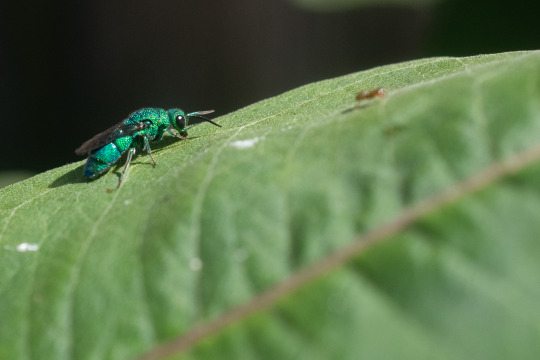
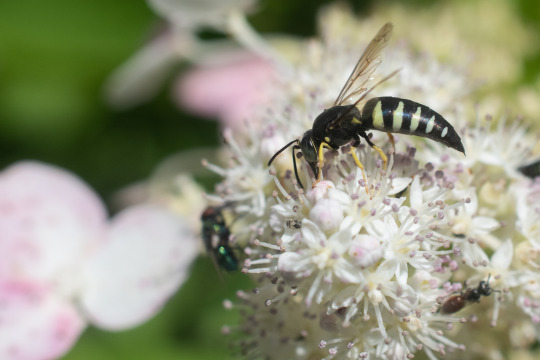
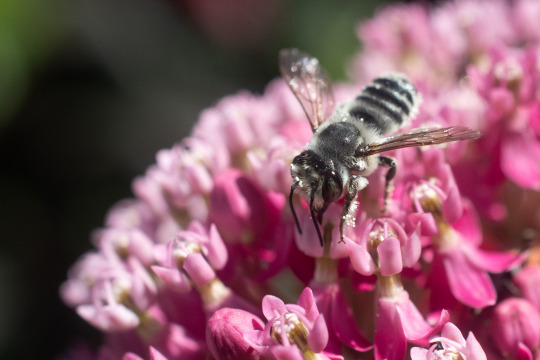





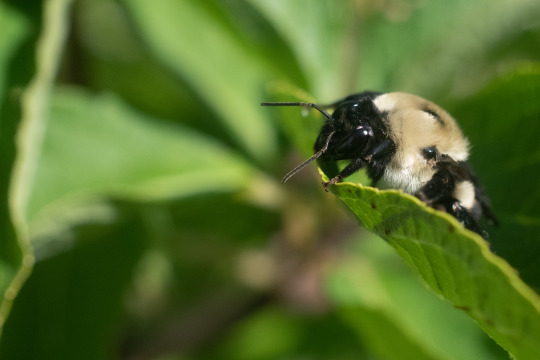
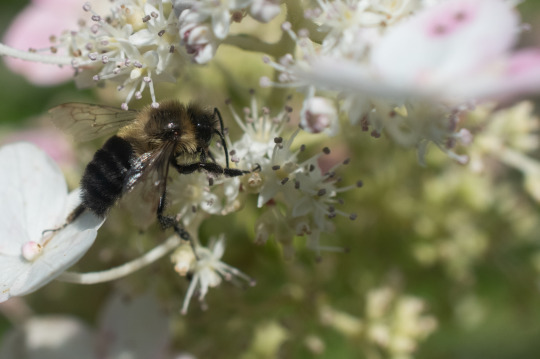
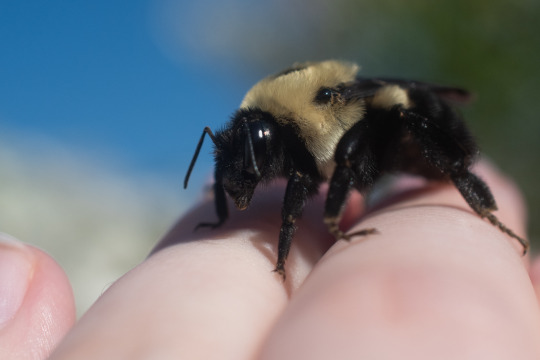


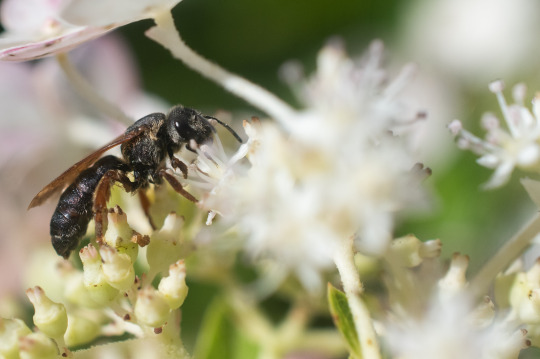

European Paper Wasp (Polistes dominula) ♂ Spotted Cucumber Beetle (Diabrotica undecimpunctata) Great Golden Digger Wasp (Sphex ichneumoneus) Five-banded Thynnid Wasp (Myzinum quinquecinctum) Common Blue Mud-dauber Wasp (Chalybion californicum) Chrysidini sp. Four-banded Stink Bug Wasp (Bicyrtes quadrifasciatus) Megachile sp. Parallel-striped Sweat Bee (Halictus parallelus) Myzinum maculatum ♀ Archytas apicifer? Goldenrod Soldier Beetle (Chauliognathus pensylvanicus) Archytas apicifer? Common Eastern Bumble Bee (Bombus impatiens) ♀ Common Eastern Bumble Bee (Bombus impatiens) ♂ Common Eastern Bumble Bee (Bombus impatiens) ♀ Lobed Mason Wasp (Ancistrocerus antilope) Narrow-headed Marsh Fly (Helophilus fasciatus) Hawthorn Mining Bee (Andrena crataegi)? Vespula Sp.
Foaming at the mouth at the absolute biodiversity in my yard this year! We have this bush in the yard that the wasps, bees and flies are obsessed with, which is where I took most of the pictures.
I also noticed these HUGE flies which I've never seen before. Usually if you even look in the general direction of a fly it immediately takes off but these ones could not care less, I could put my hand right up to them and they didn't move until I physically touched them.
Also once again completely baffled by the people who talk about how "aggressive" and "mean" wasps are and how they constantly get stung. What are you guys doing??? None of the above species gave a single shit about me shoving my macro lens in their faces, and if it was windy I would sometimes grab the branch they were on to hold it steady and none of them even reacted.
The queen bee (which has a stinger unlike the males) also made no effort to sting me, after picking her up for a photo she actually refused to get off of my hand because she wanted to sit on me and groom her face.
We've also had lots of yellowjackets (I'm so bad at IDing them so no idea on species) approaching us recently and checking us out, flying extremely close and looking at us and then flying away. Even if I put my hand up in front of them to see if they want to land they sort of just look at it and then fly away.
Last year there were paper wasps on nests in my yard and they would stare at me warily but never sting me when I photographed them.
Also feel free to ID things on my iNaturalist or correct me on any IDs here!
#Long Post#Not Pets#Wildlife Photography#Invertebrates#European Paper Wasp#Spotted Cucumber Beetle#Great Golden Digger Wasp#Five-banded Thynnid Wasp#Common Blue Mud-dauber Wasp#Four-banded Stink Bug Wasp#Parallel-striped Sweat Bee#Goldenrod Soldier Beetle#Common Eastern Bumble Bee#Lobed Mason Wasp#Narrow-headed Marsh Fly#Hawthorn Mining Bee#Yellowjacket
1 note
·
View note
Text






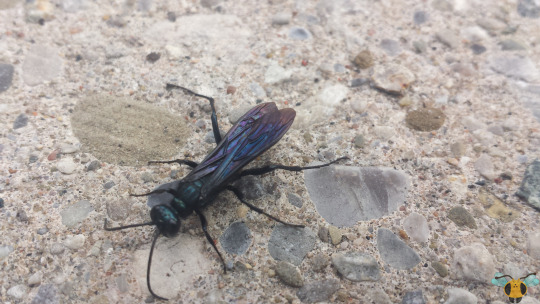

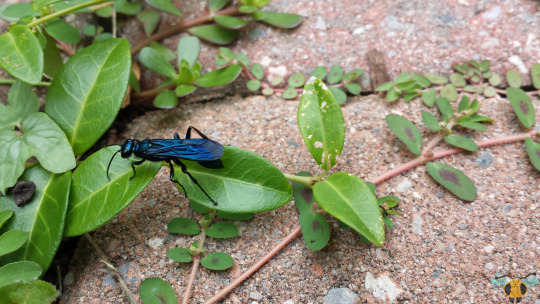

Common Blue Mud Dauber Wasp - Chalybion californicum
Returning from the long weekend cottage trip in Caledon, I'm so excited to share all the new insects I photographed there! There'll be quite a few to explore over the next few weeks, but before that, a prelude featuring an insect on hunt while we were loading the car. I've also added a few pictures from the beginnings of my insect photography hobby to show the insect in a more neutral position. As mentioned in earlier posts, solitary Digger Wasps make ground burrows or nests (this specie builds cells into a nest out of mud) and place their eggs inside. The eggs await a provision of food which the mother Wasp tirelessly hunts for; when the former hatch, they will have enough solid food to last them through to pupation. The Blue Mud Dauber's prey items of choice are spiders: any kind as long as they can be captured. While a video would've been better in hindsight to show how she hunts, they pictures before you here showcase the stinging and seizing inflicted by a mother Wasp. When we all first noticed her, he was flying around the garage door but not in an erratic fashion.
She was flying around systemically, combing as much air space as she could along the border of the garage door (occasionally landing) until reaching the top where she found cobwebs. I was grateful as while flying and landing these Wasps are very skittish making photography difficult, but little did I know what was really going on. After navigating her way closer to the web, she used her legs and head to twang and create movement in web, drawing the attention of a spider that crawled out from a dense web ball. The trap was set! In about 3 seconds, the spider rushed to investigate the "prey" entangled in the web and at the last second, the Wasp launched herself and enveloped the spider with her legs. By grappling the spider, the Mud Dauber can orient herself to navigate her paralyzing sting into the spider and then restrain it for easier transportation. This, along with the advantage of flight allows Wasps to effectively hunt and capture spiders, but they shouldn't get too arrogant as the winner is always the one who gets the last bite. This time, mama Wasp won. After the spider stopped struggling, the Dauber dropped from the threads and flew off, carrying her prize with her back to her muddy nest.
Pictures of the hunt were taken on June 30, 2023 with a Google Pixel 4. Supplementary pictures were taken on June 27 and September 11, 2018 with a Samsung Galaxy S4.
#jonny’s insect catalogue#ontario insect#wasp#common blue mud dauber wasp#blue mud dauber wasp#digger wasp#hymenoptera#insect#toronto#june2023#2023#september2018#june2018#2018#nature#entomology#spider#invertebrates#arthropods#animals#photography
3 notes
·
View notes
Text
How to Get Into Bugs
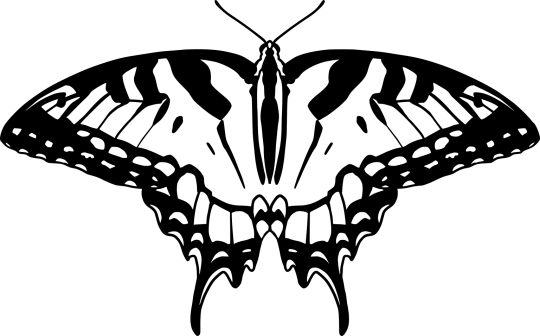
"A world of dreams and adventures with bugs awaits! Let's go!"
What are bugs? In this document when I say “bugs”, I refer to small invertebrate animals like insects, spiders, snails, and worms. These creatures are underappreciated, and their importance to the health and function of life on Earth cannot be overstated. Bugs aerate the soil, pollinate plants, spread seeds, clean up dead plants and animals, provide food for countless species, prey upon countless others, and cycle nutrients across the planet, among other services.
Bugs are amazing creatures. They come in a vast variety of shapes and colors, from the shining wings of a blue morpho butterfly to the pebble-like body of a toad bug. Their habits and behaviors are just as complex as those of larger animals. Stick insects sway as they walk to mimic a branch blown in the wind, mud dauber wasps gather mud to build earthen nests, and moths read the stars to navigate in the dark. Because they are small, bugs can be supremely adapted to their environment. Many insects will form relationships with specific plants, only pollinating or laying their eggs on these species.
There are many mysteries left to uncover about bugs. Insects alone make up 75% of known animal species, with more being discovered every day. These species are not only being found in remote forests and grasslands, but in woods, parks, and other habitats closer to home. You may be the first to discover a rare creature found only in your area! It is not only new species that present us with mysteries. There is ongoing research into even common species, to answer questions like how flies land upside down, how beetles fold their wings, or how bees make decisions on where to build their nests.
If you appreciate them, the world will become more vibrant. Wherever you are, you can almost certainly find bugs. By noticing these creatures living around you, you will become more aware of nature not as an untouched ideal found only in mountain rainforests or ocean trenches, but as the life that permeates even the most “average” places.
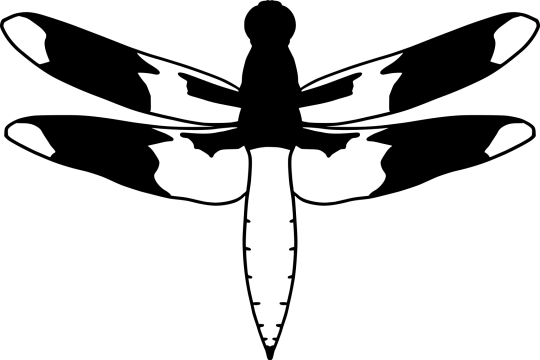
How Can I Get into Bugs?
Go for a walk! As you are walking, take the time to look closely at your surroundings. Notice the different species of insects you see flying around. Look at the leaves and branches of plants. Turn over rocks and bricks. Do you see any bugs? Focus on one of the animals you see. What is it doing? Searching for food? Resting? Building a nest? Have you ever seen this bug before? What is it called? What is its life cycle like? These questions provide starting points that you can use to learn about the creatures that live alongside you.
Get acquainted through books, websites, and videos! Field guides and websites like iNaturalist serve as great first steps to familiarizing yourself with the species found in your area. Select a favorite species or family of bugs, then go out to search for them in the wild. Online resources can also be used to overcome phobias. If you find yourself creeped out by an animal, you can look up videos online to get used to its appearance and movements.
Gather some useful gear! If you are looking to catch bugs for photography or collection, you'll want to have a jar of some kind to contain them. Mason jars work well for large specimens and 2 oz. travel sized jars work well for smaller animals. Flying insects like moths and dragonflies can be captured with a butterfly net, while sweep nets can be brushed against vegetation to collect crawling animals. Dip nets are made for use in water and can be used to capture shrimp and snails along with aquatic insects. In addition to bug-specific equipment you may want gear like a bookbag, sunscreen, hiking boots, canteen, and long pants if you are going out into wilder areas.
Know where to look! Different species of animals need different resources to survive, so they will be found in different places. Look beneath logs or dead leaves to find isopods, millipedes, and earthworms. Ponds and other water bodies are often home to water skaters, crayfish, and water beetles. Flowering plants are a good place to find bees, butterflies, and wasps. Caterpillars, aphids, and planthoppers can often be found on leaves and branches. Some species of insects can only be found on particular plants. Whenever you find a new plant species, take a closer look to see what is living on it. Also be aware of what time you go out searching. If you go to the same location during the day and night, different creatures will be active.
Keep a record of your adventures! Whether it be a digital photo album, a collection of preserved insects, or a written diary, records will provide you with an easy way to revisit memories of your exploits. You might also have more fun exploring the world of bugs if you have a personal project to develop.
Raise bugs in captivity! Caterpillars and beetles can be raised over a season and released when they undergo metamorphosis. Snails and isopods are easy to keep so long as they are fed vegetable scraps and have humid places to hide in their enclosure. Many insects, spiders, snails, and other invertebrates are easy to care for in vivariums. Just be sure not to overcollect! While many bugs have healthy populations, others need as many wild breeding individuals as possible. Entirely avoid collecting endangered species or taking animals from protected areas.

Help Your Local Environment!
Insects, arachnids, and other invertebrates serve as essential building blocks to the global ecosystem and help to keep our world functioning. There are many ways you can help bugs:
If you enjoy gardening or landscaping, grow some plants native to your area. Native plants provide local species with food and shelter, and because they are adapted to your habitat, often require less care than exotic plants.
Avoid spraying pesticides and herbicides unless truly necessary. Not only can these substances kill off non-target species, they can also increase the populations of pesticide-resistant species, runoff from their site of application, and seep into local soil and water supplies.
Select a woodland, meadow, or section of waterway and keep it clean of litter. Pollution may be a global issue, but the world is made up of places, and you can make tangible change in your local area. See if you can get some friends together to help out. Cleanup efforts are most enjoyable with a few extra hands!
You can protect your local woods, creeks, or other wilderness spaces by working with your community’s hobbyists and environmental organizations, learning about your local ecosystem, and sharing your thoughts with others.
Many of the environmental, societal, and health issues we face are interconnected. Thus, improving one situation will make it easier to address others. Whatever problem you are most equipped to face, do your best. Even the smallest action you can take changes the future and makes it that much better.
Online Resources
https://www.inaturalist.org/observations/ - Explore worldwide observations of living things.
https://xerces.org - The Xerces Society for Invertebrate Conservation is an international nonprofit organization that protects the natural world through the conservation of invertebrates and their habitats.
https://en.wikipedia.org/wiki/Portal:Arthropods - Wikipedia information on arthropods, their habits, and biology.
https://bugguide.net/node/view/15740 - Information on bugs from the United States and Canada.
https://www.pbs.org/show/deep-look/ - Explore big scientific mysteries by going incredibly small.
Chromatophone Nature Youtube Channel – No-Commentary wildlife footage, like a virtual nature walk.
Thank you for reading! For a PDF version of this post, visit my blog an check the pinned post.
48 notes
·
View notes
Text
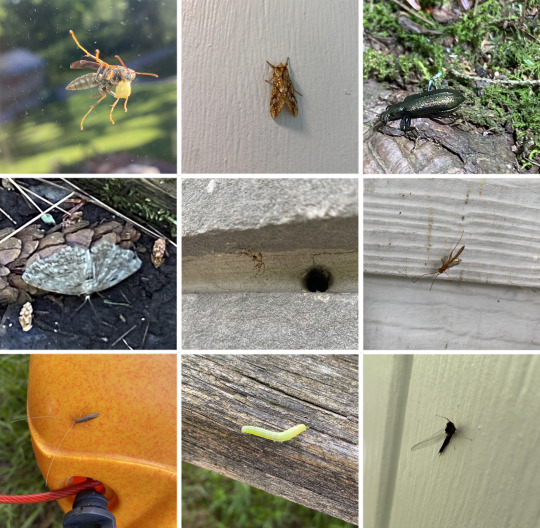
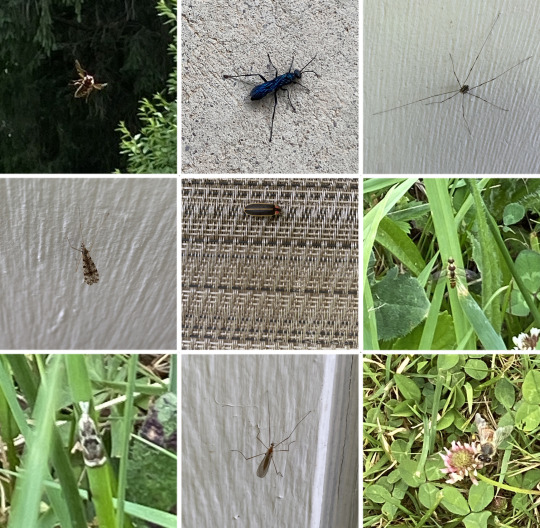



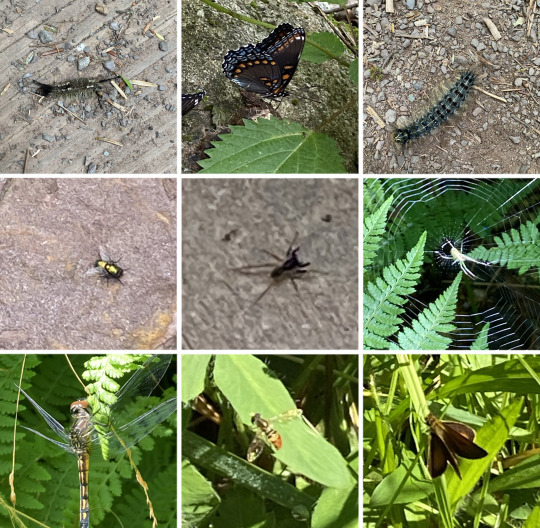
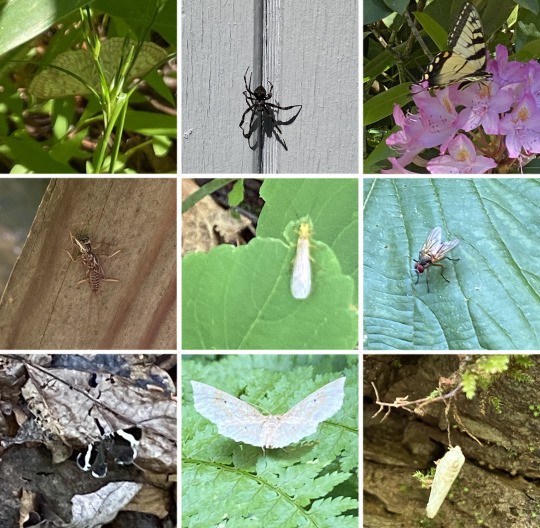
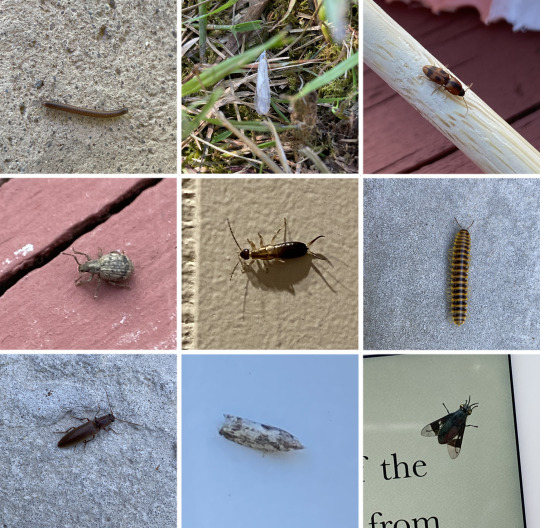
Zuzu's bug-ventures June 8-16, 2024 (insects/spiders from a state park in northeast Pennsylvania) (re-uploading because of file size issues)
I figured I would make a collage after getting so many! A couple of the above photos have duplicates, so all in all I believe I found 65 distinct kinds. I'm still working to ID some of them, but all the ones I think I have ID'd are under the cut. Anyway, it was truly a fun experience. Maybe next time I'll have a camera that isn't a shitty phone!
You can see full size photos of most of these here.
IDs under the cut
Just a note, I'm not 100% on any of these. My IDs are speculative based on google searches, reddit, and so-on. If you think something is wrong, PLEASE let me know!
Also, each image has 9 insects/spiders in a grid. I will be referring to each grid of 9 insects/spiders as a single image below, and identifying all 9 based on rows within the image. If that makes sense. Hopefully it does!
Image 1 (first row left):
Top row (from left to right): Northern paper wasp (I'm told it's carrying caterpillar meat); Hickory tussock moth; Ground beetle of some kind (could not ID)
Middle row: Fall cankerworm moth; Barn spider; Red ichneumon wasp
Bottom row: Long-horned caddisfly; Copper underwing caterpillar; Brush-legged mayfly
Image 2 (first row right):
Top row: Very loud very big bee (could not ID); Common blue mud dauber wasp; Harvestman spider
Middle row: Limoniid crane fly; Firefly; Hoverfly
Bottom row: Elegant grass-veneer moth; Tiger crane fly; Western honey bee
Image 3 (second row left):
Top row: Two-spotted bumble bee; Marsh fly; Yellow-collared scape moth? (could not ID)
Middle row: Wolf spider (male); Macaria moth; Tipula lunata (type of crane fly)
Bottom row: Robber fly; Brown-toed forest fly; Virginian tiger moth
Image 4 (second row right):
Top row: Blue dasher dragonfly? (could not ID. Dead in spider web); White admiral butterfly; Chalk-fronted corporal dragonfly
Middle row: Clubtail dragonfly? (could not ID); Hemlock borer beetle; Eastern tent caterpillar
Bottom row: Another Tipula lanata crane fly; Double-banded grass-veneer moth; Horace's duskywing butterfly
Image 5 (third row left):
Top row: Cabbage white butterfly; Spongy moth caterpillar; Dragonfly exoskeleton (could not ID)
Middle row: White-striped running crab spider; Jumping spider (could not ID, but yes there is a spider in this photo!); Orchard orbweaver spider
Bottom row: Soldier beetle; Fortunate wave moth; Another white admiral butterfly
Image 6 (third row right):
Top row: Tussock moth caterpillar; A third white admiral butterfly (this is the last one I promise! They just have so much variation!); Another spongy moth caterpillar
Middle row: Common green bottle fly; Eastern parson spider; Another orchard webweaver spider
Bottom row: Blue dasher dragonfly (possibly female); Calligrapher fly; Dun skipper butterfly
Image 7 (last row left):
Top row: Another fortunate wave moth? (could not ID); Orbweaver spider of some kind (Could not ID); Eastern tiger swallowtail butterfly
Middle row: Stonefly exoskeleton; Ontario sallfly; Lesser house fly
Bottom row: White-striped black moth; Pale metarranthis moth (this one is my favorite find); White planthopper? (could not ID)
Image 8 (last row right):
Top row: Millipede; Immaculate grass-veneer moth; Flat wireworm beetle
Middle row: Twobanded Japanese weevil (WEEVIL TIME!!); Earwig; Bob's yellow and black millipede
Bottom row: Click beetle; Sod webworm moth? (could not ID); Deer fly
And that's it! Again, let me know if I made mistakes or if you know any of the ones I couldn't ID.
#insects#insect photography#bugs#insect identification#tw insects#tw spiders#my photos#memories;#Zuzu's bug ventures
11 notes
·
View notes
Text
Nature’s Revenge
Anthrax poisoning (natural)
Avalanche
Blizzard (exposure, hypothermia)
Drought
Earthquake
Flood (drowning)
Hailstorm
Heat wave (exposure, dehydration, leads to brushfires)
Hot spring
Hurricane
Lightning strike
Limnic eruption
Quicksand
Tar pit
Tornado
Tsunami
Volcanic eruption (and assorted catastrophes, like pyroclastic flow, lava, volcanic ash, and lahars)
Animal Attack
Attacked by a herbivore (cows, buffaloes, water buffaloes, cape buffaloes, muskoxen, wisents, hippopotami, rhinoceroses, elephants, horses, gelada baboons, gorillas, cassowaries, wild boars, and white lipped peccaries can fatally trample, kick, bite, or gore humans)
Attacked by a predator (tigers, wolves, leopards, lions, cougars, dingoes, coyotes, feral dogs, bears, hyenas, killer whales, crocodiles, alligators, Burmese pythons, anacondas, komodo dragons, great white sharks, bull sharks, tiger sharks, mako sharks, oceanic whitetip sharks, piranhas, and goonch catfish {unconfirmed} can and have killed and/or eaten humans)
Snakebite (King cobras, western and eastern diamond back rattlesnakes, black mambas, green mambas, spitting cobras, inland taipans, sea kraits, cottonmouths, olive-brown sea snakes, Belcher’s sea snake, puff adders, fierce snakes, brown snakes, king snakes, death adders, tiger snakes, Russell’s viper, saw-scaled vipers, Lebetine vipers, neotropical rattlesnakes, coral snakes, lanceheads, bushmasters, timber rattlesnakes, prairie rattlesnakes, Mojave rattlesnakes, all have potentially deadly bites)
Spider bite (brown recluses, black widows, yellow sac spiders, fringed ornamental tarantula, Chinese bird spiders, mouse spiders, Chilean recluse spiders, redback spiders, Sydney funnel web spiders, six-eyed sand spiders, and Brazilian wandering spiders have potentially deadly bites)
Insect sting(s) (European bees, “killer bees”, Japanese wasps, white hornets, honeybees, yellow jackets, bald-faced hornets, European hornets, open pipe mud daubers, paper wasps, and velvet ants can trigger allergies or sting en masse)
Insect bites (kissing bug, assassin bug)
Ants (siafu, bullet ants, army ants, and fire ants can kill the young and old)
Parasites (tapeworms, heartworms, liver flukes, hookworms, and Guinea worms can cause life-threatening complications)
Naegleria fowleri (deadly amoeba)
Methods of Execution
Burning at the stake
Beheading
Crucifixion
Drawing and quartering
Hanging
Drowning
Lethal injection
Firing squad
Electric chair
Gas chamber
Unusual Methods of Execution
Buried alive
Blowing from a gun (tied to a mouth of a cannon, which is then fired)
Boiling to death
Breaking wheel
Crushing
Disembowelment
Falling (being thrown from a height)
Flaying
Garroting
Impalement
Keelhauling
Starvation/dehydration
Stoning
Poisoning
Eating fungi (deadly conocybe, death cap, deadly galerina, false morel, destroying angel, livid entoloma, deadly fibrecap, red-pored bolete, sulfur tuft)
Eating other poisonous plants (deadly nightshade, lots of apple seeds, rosary pea, oleander, European yew, daffodils, doll’s eye, hemlock, stinging tree, castor beans, angel’s trumpet, monkshood/aconite, white snakeroot, western water hemlock, Bushman’s poison, strychnine tree, moonseed, daphne, rhododendron, chokecherry, manchineel tree, jimsonweed, lily-of-the-valley, hydrangea, poet’s narcissus, foxglove, larkspur, poinsettia, mountain laurel, and mistletoe)
Other poisons (arsenic, hydrogen peroxide, pure alcohol, ethylene glycol {antifreeze}, nicotine, sodium cyanide {industrial reactant}, strychnine {pest control}, ricin, soman, Agent Orange, batrachotoxin, asbestos, iron, hydrofluoric acid, radioactive elements {heavy metals like uranium, polonium, plutonium, cobalt, manganese, mercury, lead}, thallium salts {tasteless!}, and warfarin)
Poisonous animals (cane toads, American toads, common toads, poison dart frog, pacific newts, blowfish, lionfish, stone fish, blue-ringed octopus, box jellyfish, cone snails, Pfeffer’s flamboyant cuttlefish)
Poisons in chemical warfare (mustard gas, sarin, VX, Lewisite, ricin, abrin, Tabun, soman, VR)
Everything Goes Wrong
Airplane crash
Accidental fires (unattended candles or fireplaces, electrical shortages, unattended matches, closely packed peanuts)
Accidentally shot
Alcohol poisoning
Autoerotic asphyxiation gone wrong
Bird attack while rock climbing
Car accident
Carbon monoxide poisoning
Choking
Complications during childbirth
Diving into shallow water
Dressing inappropriately for the weather
Eating expired food
Electrocution
Falling from a great height
Falling into a wood chipper
Falling off a riding animal (horse, camel, elephant, etc.)
Firework malfunction
Gas leak
Hit by a vehicle/carriage/ship/train
Inhaling fuel, natural gas, methane, etc.
Machinery
Medical malpractice
Playing sports
Power line in the water
Roller coasters
Shipwreck
Space
Standing under a falling tree
Suffocation
Swallowing small objects
Swallowing the wrong pills
Trampled to death in a crowd
Tripping
Walking onto train tracks
Weapons
Firearms (pistols/handguns, revolvers, rifles, shotguns, blunderbusses, arquebuses, zip guns)
Nuclear weapons
Ranged weapons (arrows, ballistas, trebuchets, Greek fire, catapults, margonels, slingshots, boomerangs, cruise missile, cannons, rockets, grenades, mortars, bombs,
Stabbing/slashing weapons (swords, daggers, poniards, spears, axes, poleaxes, halberds, shivs)
Methods (General)
Temple crushed
Stabbed in the eye
Gutted
Blunt force trauma to the head, neck, or chest (rarely)
Femoral, jugular, and/or brachial arteries severed
Destroyed heart
Destroyed brain
Destroyed lungs
Punctured lungs
Destruction of a majority of organs
Shock
Loss of more than 2 L of blood
Exhaustion
Dehydration
Asphyxiation
Starvation
Exposure
Failure (kidneys, brain, heart)
Heart attack
Stroke
Disease
Arising from poor sanitation (arsenicosis, diarrhea, cholera, fluorosis, typhoid fever, polio)
Spread by insects (malaria {mosquito}, Bubonic plague {flea}, sleeping sickness {tsetse fly}, Lyme disease {tick}, dengue fever {mosquito}, leishmaniasis {sandfly})
Spread by other animals (influenza {pigs}, rabies {mammals}, Chagas disease {chickens and dogs})
Infectious diseases (smallpox, scarlet fever, mononucleosis, syphilis, whooping cough, HIV/AIDS, tuberculosis, pneumonia, ebola, HRSV, HMPV, hepatitis A, B, and C)
Acquired (Alzheimer’s, meningitis, cancer, Parkinson’s, Chronic Obstructive Pulmonary Disease, lupus, pleurisy, tetanus)
Genetic (sickle cell disease, hemophilia, polycystic kidney disease)
Dumb Ways to Die
Below the cut is +400 ways to kill your characters
Keep reading
7K notes
·
View notes
Photo


Found this critter patrolling around in the butterfly garden while Krystle, Arielle and I were checking things out. At first I thought it was just debris and then it started moving. What kind of caterpillar is it?
#Animalia#Arthropoda#Insecta#Nikon D3400#nikonphotography#my insects#nature photography#photographers on tumblr#Black Bayou Lake National Wildlife Refuge#wildlife#blue mud dauber#common blue mud-dauber wasp#my wasps#Hymenoptera#Sphecidae#Chalybion#Chalybion californicum#wasps#mud daubers#blue mud daubers#Sceliphrinae#Hymenoptera of North America#biological pest control wasps
2 notes
·
View notes
Text
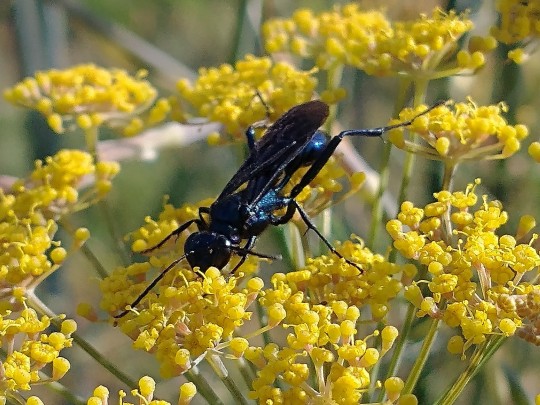
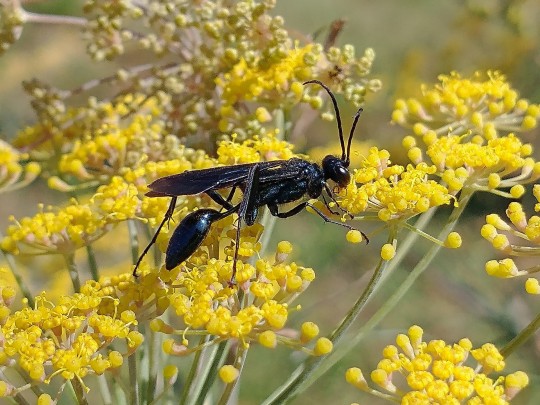
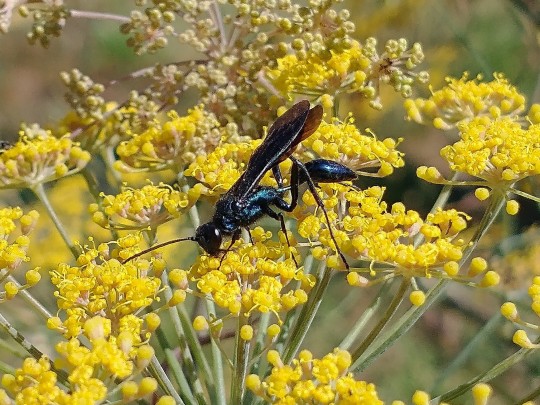
Gorgeously iridescent, but shy. Likely a common blue mud-dauber (Chalybion californicum).
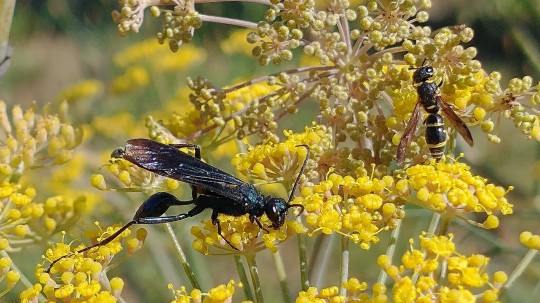

Here it is next to an smaller, unknown potter wasp.
3 notes
·
View notes
Text
truly cannot overstate how important it is for everyone to do research into local insect species and just try to notice them when you go outside. there are beautiful metallic blue mud dauber wasps where i live and they’re common in the summer but i just never noticed them until this past year. there are so many dragonflies at the local park. in one walk this june i found ebony jewelwing damselflies and an enormous stinkbug and an emerald-coloured tiger beetle and there is honest to god so much beauty in the insect world if you are willing to look for it
#speaky girl#bugs#insects#bugblr#even 'common' insects!#there are these BRIGHT RED flies at the park#there are so many kinds of ants#sweat bees exist and they're metallic green#idk. look at bugs#this has been a psa
9K notes
·
View notes
Text
Here's a few considerations that are in my opinion pretty good
source: i am currently working on a bug alien porn game

European Firebug. Got the legs, got a pretty dashing red and black pattern, I know the edgier of you like that color scheme a whole bunch. Lovely red eyes. Like lime tree seeds, perhaps it could translate to an affinity for good cooking if we wanted to anthropomorphize

2. White-lined Sphinx and the Sphinx moths as a whole have a lovely tendency towards elaborate patterns, this particular species having a nice pink coloration on the underwings.

3. Spotted Lanternfly. Invasive, stupid, has no concept of personal space but some like that. A large bug with brightly colored red underwings and a spotted pattern on the top pair it manages to own.

4. Red Milkweed Beetle. A very whimsical and distinguished fellow. Bright and bold color with a dash of arguably tasteful spots. Perhaps a little clownish to some but the curled antennae give him a charm.

5. Mediterranian Spotted Chafer. Now that's someone with real class and taste. A smart black and white ensemble, but not afraid to get a little covered in pollen in pursuit of sweet nectar. Has an affinity for getting photographed with flowers.

6. Black Witch Moth. Now we're talking. the name, the finely patterned ensemble, the eye spots. The sheer size of the fucking thing. Looks amazing under UV light. Stares right into your soul.

7. Six-spot Burnet. Lovely red spots, long dark legs, a sleek, elongated shape, a tasteful blueish sheen. Is amazingly photogenic next to lilac and purple.

8. American Rubyspot. The transparency with a splash of color. The carnivorous lifestyle next to water. Gloriously aerodynamic. A little green sheen as a bonus. Lovely all around.

9. fucking look at that thing what is that [red banded leafhopper]

10. Blue-winged Scoliid Wasp. Now, it's no secret wasps are pretty bugs. But this one's gold spots with copper hairs and blue-black base are particularly dashing to me. The wings appear either bluish or copper depending on the light as well

11. Nearctic Blue Mud-dauber Wasp. But if you want to get into some Good Shapes you can do worse than a mud dauber wasp. The alien-like proportions, the distinctly metallic look and feel, the long antennae the piercingly thin legs, she got it all

12.Common Cockchafer. i'm not immune to funny name

13. The Devil's Coach-horse Beetle. A delightful little fellow in all black, but not without cheer in his eyes. With such alternative names as 'coffin cutter' and a myth that you'll be forgiven sins if you crush it this specimen is cunty indeed.

14. Common Lovebug. A delightful name for a delightful bug! They stay together a while after mating so if you like days-long aftercare maybe that's the bug for you.

15. Harnessed Tiger Moth. Bondage and pink. Carefully maintained antennae, long black boots. The patterns on the underwings occasionally resemble hearts. Pretty and knows it.

16. Meadow Plant Bug. Long, adapted for lovely camouflage among seed-bearing plants it feeds on and is considered a pest for. Has wonderfully long antennae, comes in coppery or green accent. I just think they're neat.

17. The Tanner. A badass name, a thick, armored body, an even dark color. They're pretty big guys, and their thicker, segmented antennae suit them wonderfully. Very handsome.

16. White Plume Moth. The fucking audacity to look like some sort of halfway crushed ghost thing. Could very well be a fae in disguise. Seems to know of its fragility and laugh in its face. Its ghastly eyes watch you carefully.
what is the cuntiest/sexiest insect
#bugs#jokes aside these are all good design inspo#go forth please design some hot bug people based on these i'd love to see
376 notes
·
View notes
Photo

I’m not sure what this little one is I think she’s a mud dauber maybe?
I tried for a good half hour to get a picture that looked any good and this is as good as I could do. They are very very very skittish and I could not get a shot that showed off just how vividly blue they are.
I’ll try again on Monday
On the bright side I did learn a new bug hunting technique. If you kinda just sway in the breeze like mantises do they are a lot calmer about you being there. I feel like I leveled up as a bug hunter. Although now I look like much more of a weirdo.
7 notes
·
View notes
Text
@whocaresgobuckwild submitted: Found this guy in my home a few months back :) location: [removed] (please remove location)

Also sorry if this is very common or something I'm not great with insects jsbsbsh
No problem, most people can't ID random wasps! Looks like a thread-waisted wasp in Sphecidae, more specifically a blue mud-dauber wasp. I won't mention which species exactly, as that may give away your general location.
50 notes
·
View notes
Text
I haven't managed to get a lot of pics recently but I HAVE seen quite a few wasps around! Including: an iridescent blue/green cuckoo wasp, a small wasp (potter wasp?) with oddly round abdomen (as opposed to pointed at the end), a black ichneumon wasp drilling into a fence, a wasp that appeared to be mostly bright red and that acted like a mud dauber as it dug into some sand, another mason wasp that got into my room through the window (successfully freed), a thread-waisted wasp that seems to like drinking/collecting rain water from one particular spot, and a pair of yellow jackets (common yellow jacket and bald faced hornet respectively) fighting each other midair!
3 notes
·
View notes
Photo










Common Blue Mud Dauber Wasp - Chalybion californicum
Mud Dauber Wasps tend to be rather skittish and shy, especially when it comes to photography. Even if some individuals are found, it’s not a guarantee that they’ll want to stick around to be photographed, even if you’re far from them. They’ll take notice of you and then fly away to escape! It’s such behavior like that which gives a picture like Pictures 2 and 7. From my experience, the best way to photograph a Mud-Dauber is to find one that’s either preoccupied by something or during cold days when their movement is sluggish. For example, the individuals showcased in the remaining pictures are occupied with different food sources: one individual has found sticky-sweet material on milkweed leaves (which is likely to be honeydew) while the individual on the Japanese maple tree has a bit of something in its mandibles. The latter is a bit strange as adult Mud-Daubers rely on nectar from flowers rather than insects (their Wasp-waist restricts intake of solid food), meaning this is a capture for the nest. Closer inspection reveals it to be a small spider (probably)! Indeed, that’s definitely going to the nest as a provision for their eggs.
As their name suggests, this specie makes a nest in the ground. Sometimes it doesn’t even make a fresh nest, but instead reuses old or abandoned nests to make its home. While anecdotal, my front yard sees the Blue Mud Dauber population return year after year underneath two bushes. It’s possible the nests there are reused generation after generation. Hopefully the close proximity of nests to Wasps doesn’t result in squabbling or territorial disputes. The Wasp not only nests in the ground, but also hunts close to the ground too. This might be a strategy to evade other predators and to hunt spiders who stray away from their webs or those who have yet to build a nest. It’s much more dangerous to fight a spider on its own turf, even with size being in the Wasp’s favor, along with a lot of favorable stinging angles. They do always have the option to ascend to higher altitudes to try their luck at hunting, but more than likely they’ll just find flowers to drink from, and fellow pollinators such as the guest appearance Western Honeybee. Though not as populous as the latter, the efforts of the Blue Mud Dauber have contribution to the pollination and spread of several flowers.
Pictures were taken on June 30, July 7, 8 and August 4, 2019 with a Samsung Galaxy S4.
#jonny’s insect catalogue#ontario insect#wasp#common blue mud dauber wasp#blue mud dauber wasp#digger wasp#hymenoptera#insect#june2019#july2019#august2019#2019#toronto#western honeybee#entomology#nature#invertebrates#arthropods#photography#animals
1 note
·
View note
Text
lmao i was talkin about bugs with my mamma and i managed to name over 100 bugs/arthropods that i’ve seen with my own eyes. i’m so proud of my bug-seeing. <3
big dipper firefly
brown chafer
japanese beetle
cucumber beetle
seven spotted ladybug
rove beetle
eastern hercules beetle
six spotted neolema beetle
brown marmorated stink bug
eastern leaf-footed bug
leaf hopper
dog day cicada
periodical cicada
waterboatmen
backswimmers
wheel bug
thread-legged assassin bug
pselliopus assassin bug
polyphemus moth
pandora sphinx moth
luna moth
tiger moth
snowy urola moth
hummingbird moth
nessus sphinx moth
somber carpet moth
wavy lined emerald moth (caterpillar)
eastern tent moth
eastern tent moth caterpillar
snowberry clearwing moth
monarch butterfly
tiger swallowtail butterfly
black swallowtail butterfly
zebra swallowtail butterfly
zebra wing butterfly
fiery skipper butterfly
silver spotted skipper butterfly
peck’s skipper butterfly
red admiral butterfly
red spotted purple admiral butterfly
cabbage white butterfly
common buckeye butterfly
chinese mantis
carolina mantis
field cricket
camel cricket
bush cricket/katydid
giant lubber grasshopper
american cockroach
german cockroach
oriental cockroach
carpenter ants
dobsonfly
widow skimmer dragonfly
red saddlebags dragonfly
black saddlebags dragonfly
autumn meadowhawk dragonfly
blue dasher dragonfly
ebony jewelwing damselfly
whitetail skimmer dragonfly
green darner dragonfly
earwig :(
pill millipede
wood louse
house centipede
mosquitos, duh
fruit flies, duh
robber flies
crane flies
picture-winged flies
cicada killer wasp
european hornet
bald faced hornet
eastern paper wasp
european paper wasp
eastern yellowjacket
european yellowjacket
southern yellowjacket
red paper wasp
common paper wasp
black and yellow mud dauber wasp
common thread waisted wasp
cuckoo wasp
spider wasp
mason bee
european honey bee
sweat bee
eastern bumblebee
american bumblebee
carpenter bee
four toothed mason wasp
carolina wolf spider gotDAMN those motherfuckers are ENORMOUS
crab spider
marbled orb weaver
black widow spider
cobweb spiders
cellar spiders
three spotted jumping spider
american giant millipede
northern walkingstick
planthopper
tiger bee fly
box elder bug
large milkweed bug
SO MANY BUGS TO SEE
#the :( by the earwig is bc an earwig got in my mouth when i was in kindergarten :(#so i Don't Like Them
6 notes
·
View notes
Note
Got any cool pictures of bugs to share???
DO I!

Found this velvet ant (actually a kind of ground-dwelling wasp) on the ground outside my house a few months ago!

And this bee was on our sunflowers yesterday— I think iNaturalist identified it as a litigated furrow bee

This is a short-horned grasshopper!

A mud-dauber, one of the thread-waisted wasps

A rock bristletail! These are interesting because they belong to one of the basalmost insect orders, the Archaeognatha. (Fun fact: my mom found a jumping bristletail the other day and was like JESUS WHAT IS THAT because it did in fact jump at her.)

A blue dasher, and I’m still proud of how this picture turned out.

A common snakefly! (Which is a misnomer, seeing as they’re not actually flies.) Check out the neck and the ovipositor (no, that is not a stinger)

Ladybug nymph! Not exactly uncommon, but still cool to look at.

Spotted cucumber beetle found on one of our squash plants, which mom wasn’t happy about

And an honorable mention to this picture of a honeybee I got because I’m also really proud of how it turned out.
I can only add 10 pictures to a post at a time so that’s all for now but I’ll continue bringing you insect updates!
21 notes
·
View notes
Note
Excuse me my good fellow do you have any wasps that are... P u r p l e ?
oh ho purple a rare trait for animals indeed and because of that examples of just purple wasp hard to find BUT iridescently purple a bit more common


up top you got the blue mud dauber and under that we have pipe organ dauber they look mostly blue to blueish purple depending on lighting

you also have iridescent cuckoo wasps like this ruby tail with its red to purplish “tail”
and then there’s Chrysis equestris who may not be the most purple of them all but just look at them

rainbow !!!!!
58 notes
·
View notes